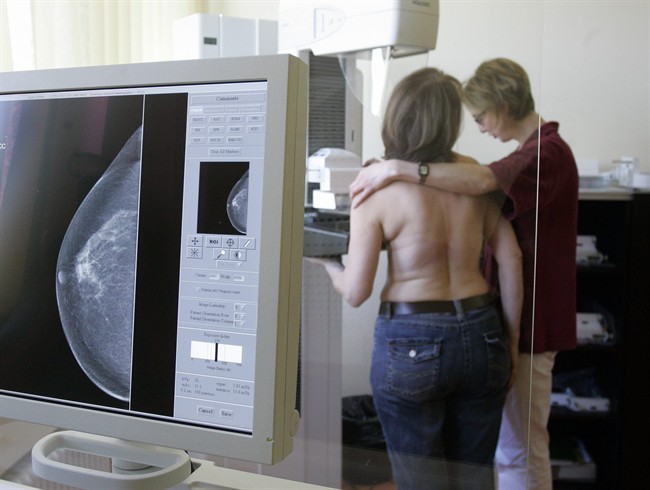LONDON – In the latest major study to consider whether the dangers of mammograms outweigh the benefits, experts say the tests can reduce the chances of dying from breast cancer by nearly 30 per cent and that national screening programs should continue.

The debate over the value of mammograms has raged in recent years.
A British review in 2012 concluded that for every life mammograms save, about three other women are unnecessarily treated for a cancer that would never have threatened their lives. In February, a rigorous Canadian paper covering older methods of screening that followed women for more than two decades suggested mammograms don’t lower the risk of dying from breast cancer.
In the new observational study, researchers tracked all Norwegian women aged 50 to 79 between 1986 and 2009, just as a national screening program was getting underway. Scientists used a model to estimate breast cancer death rates in women invited to get a mammogram as part of the government-funded program and in those who weren’t included yet. They said about 76 per cent of women offered a mammogram actually got it.
READ MORE: Alcohol often an overlooked cancer risk, Cancer Care report warns
The researchers estimated about 368 women need to be given a chance to have a mammogram to prevent one death from breast cancer and that screening reduces breast cancer deaths by about 28 per cent – similar to what many other studies about mammography have concluded.
The research was published online Tuesday in the British journal, BMJ and was paid for by the Norwegian Research Council.
“Mammograms do provide some benefit, but the problem is the screening is so sensitive it captures tumors without malignant potential,” said Lars Vatten of the Norwegian University of Science and Technology, one of the study’s authors.
Vatten said improved treatments for breast cancer were also lowering death rates in developed countries, making mammograms less important since even cancers caught later are sometimes still treatable.
READ MORE: How healthy is your city? 7 findings about Canada’s best and worst cancer-fighting cities
He said the benefits of getting a mammogram justified ongoing national screening programs but that women should be given more information about the potential harms, like having unnecessary treatment including surgery and chemotherapy.
In many Western European countries, women are offered mammograms every other year from age 50 to 70. In the U.S., a government-appointed task force recommends the screening start at 50 while the American Cancer Society recommends yearly mammograms from age 40.
READ MORE: Canada-U.S. team develop ‘sharp-shooter’ drug targeting several cancers
“To tell women not to have a mammogram is probably an overreaction but we are becoming more certain screening has significant harms,” said Russell Harris of the University of North Carolina, who co-authored an accompanying editorial. He said the paper’s estimate that being offered a chance to get a mammogram reduces breast cancer deaths by almost 30 per cent was an overestimate because of the uncertainties in the model.
“Getting a mammogram is something that women should be given a choice about,” Harris said. “It’s reasonable to decide not to do it.”
READ MORE: Breast cancer and genetics – Angelina Jolie’s double mastectomy



Comments